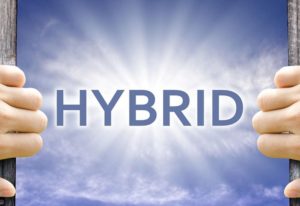Experimenting with hybrid cloud deployment models can be an exciting endeavour. The benefits of both public and private cloud computing configurations become apparent and it’s especially satisfying when the cost savings start to materialise. But it’s not all rainbows and butterflies in the cloud either. One has to take cognizance of tried-and-tested best practices when navigating such a fusion of infrastructures.
A Quick Recap
TechTarget defines private and public clouds as follows:
Private cloud is a type of cloud computing that delivers similar advantages to public cloud, including scalability and self-service, but through a proprietary architecture. Unlike public clouds, which deliver services to multiple organisations, a private cloud is dedicated to a single organisation.
A public cloud is one based on the standard cloud computing model, in which a service provider makes resources, such as applications and storage, available to the general public over the Internet. Public cloud services may be free or offered on a pay-per-usage model.
Why The Hybrid?
- Security. Not all of a company’s data is meant for public consumption, nor does the company want to take the risk that it could be exposed. This is where some data and processing is kept private – even to the extent of having an on-site cloud or data centre.
- Cloud backups. Data backups are especially important since it could mean the difference between a company closing its doors or staying afloat after a significant data loss incident. It’s generally accepted that an off-site copy will disaster-proof your recovery plan should local backup hardware fail. Scalability on an off-site public cloud will provide that if the private cloud is kept on site.
- Easy expansion. With a public cloud’s scalability also comes the option of ramping up processing power during seasonal spikes and ad-hoc resource-intensive projects. Especially companies with a Big Data component will benefit from this since it doesn’t require additional CAPEX for the necessary hardware.
The Best Practices
We had a look at some of the big names that have helped shaped the industry and who now offer advice about how best to proceed with managing a hybrid cloud setup. Microsoft, with their most notable PaaS offering, Azure, sums it up in three main points: health monitoring, self-service, and automation.
1. Health Monitoring
By monitoring your hybrid cloud you are able to manage it. This monitoring should provide visibility on the health of your web servers, database servers, and the applications themselves. The Cloud Times also reiterate the necessity for monitoring but go on to say that it should also be simple – a single interface or console, for instance.
2. Self-service
NIST requires that cloud computing first and foremost be an on-demand self-service. The platform you choose should, at a high level, be able to provide the following capabilities: broad network access, resource pooling, rapid elasticity, as well as service measurement. Have a look at MS Azure Stack – basically an improved Windows Azure Stack – as an example.
3. Automation
Automated cloud provisioning has a lot to do with cloud security. Access control should ideally be synchronised through profiles for different users and groups. These profiles then form part of an organisation’s identity and are limited to their private, public, or hybrid cloud configuration and can be deployed at the drop of a hat. Consider highly flexible, albeit prone to complexity, PowerShell scripts to achieve this.
Money Under the Mattress
In a study conducted by IBM where over 5000 executives responded, the largest portion at 63%, thought that cloud computing services will be particularly important in the next 3-5 years (as of last year). This was the highest compared to mobile solutions, the Internet of Things, and cognitive computing.
It is our belief that this trend will continue and that previous cloud security concerns, much like how people still kept their money under mattresses when modern banking became popular in the 17th century, are now being waylaid by increased maturity in cloud computing implementations and greater trust as a result.






